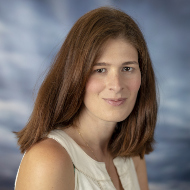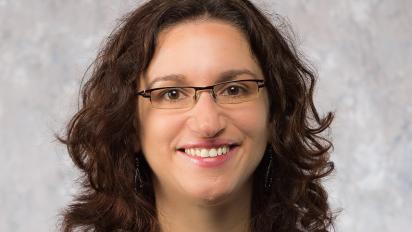Random Samples with Briana Pobiner

Briana Pobiner is a paleoanthropologist with the Smithsonian National Museum of Natural History whose research centers on the evolution of human diet, with a focus on meat-eating, but ranges as far afield as human cannibalism and chimpanzee carnivory. She joined the Smithsonian in 2005 to help put together the Hall of Human Origins. In addition to continuing her active field, laboratory, and experimental research programs, she leads the Human Origins Program’s education and outreach efforts, which includes managing the Human Origins Program’s public programs, website content, social media, and exhibition volunteer training. Pobiner has also more recently developed a research program in evolution education and science communication. NCSE’s Director of Community Science Education Kate Carter spoke with Pobiner recently about her work as a science communicator. The interview has been edited for length and clarity.
Kate Carter: What has living through a pandemic taught you about what needs to improve in science communication?
Briana Pobiner: I think what has been unsettling this year is that there has been so much less agreement on what facts are, and that is particularly unnerving for the scientific community. When there is not an agreement on what the facts are, it is really difficult to have a conversation about the meaning of those facts. One of the problems for science communication during a pandemic is the way we talk about science. Communicating uncertainty in science is important, but I think communicating certainty is important too, and sometimes that gets lost in translation.
KC: Sometimes we make the uncertainty the hook of the story, when really it is a minor consideration.
BP: And even if it is not the hook, if we lead with the uncertainty, it sounds like the hook. The academy teaches scientists to put the take-home message from their research at the end of the story, but when you communicate science with public audiences it has to be the first sentence, the headline.
KC: Has the pandemic amplified these issues?
BP: I’m not sure if it has been worse. But COVID-19 has highlighted the polarization of people thinking along the lines of their worldviews. There is still the sort of anti-intellectual, anti-elite sentiment that has always been associated with suspicion of science, but it has been heightened to a frightening extreme.
KC: So I want to ask what we as science communicators can do better. But I want to acknowledge that this burden isn’t just on us.
KC: You’re advocating a radical departure for science communication strategies.
BP: Exactly. Misinformation is spread via specialized communities, and I think we need to fight fire with fire. We as science communicators have to realize that not all scientists are good at science communication. If the most important thing is the message being sent, then we have to prioritize effective messengers.
KC: How can we model that effective science communication in museums?
BP: In the Hall of Human Origins at the Natural History Museum, we have a thread that goes throughout our exhibit. We have displays with images of scientists with speech bubbles that talk about the process of science and they all start with the question: How do we know? How do we know that these fossils are that old? How do we know this? How do we know that? This approach demystifies how we get to this news headline or that conclusion. We build those questions into lessons and museum exhibits as often as we can. One of the things that I try to do when I am on the floor of the museum is to validate visitors’ questions by saying, “That’s a question scientists would ask, and here’s the process a scientist might go through to answer it. What evidence would we need to answer that question? Let’s figure it out.” I think that highlights the discovery involved in the process of science. The discovery is what got me hooked into science and suggests that science is relatable and doable.
KC: Building inclusion in science is key for building trust.
BP: Absolutely. I joined Twitter about three months ago and I found that being on Twitter as a scientist really levels the playing field. Anybody can reach out to you and ask you a question. There are tons of scientists on Twitter and we all are there as people. Ultimately, I think we have to emphasize that science is done by humans. And those humans may occasionally make mistakes, but they are there to work for the public good.
This article has been modified slightly from its original print format.





